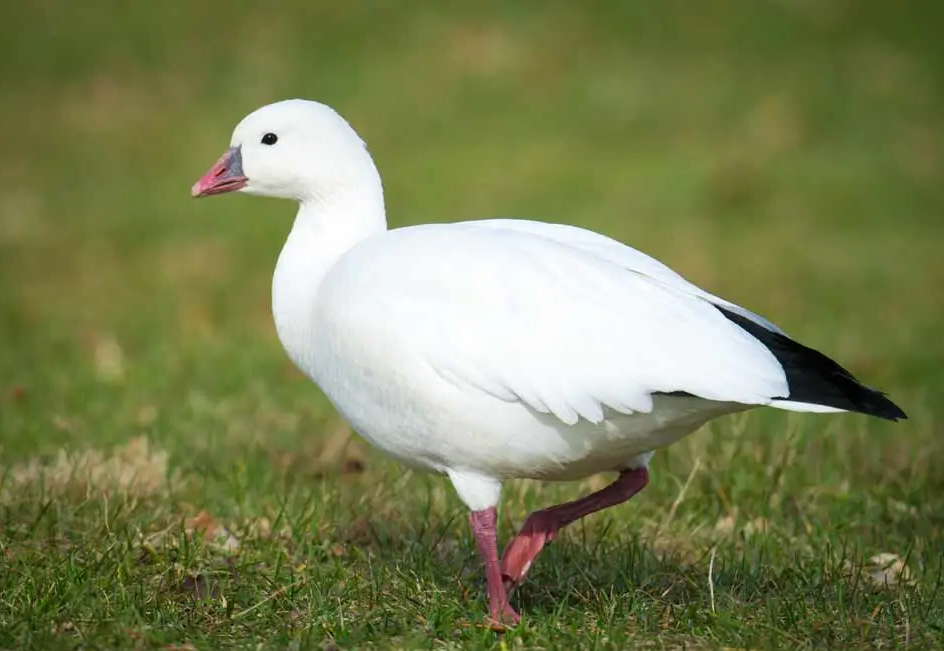
Ross Geese in Saskatchewan, Canada
Meet the Ross Goose
Let us introduce you to the Ross Goose. This is a species of goose very similar to the snow goose that you can pursue on your hunt here in Saskatchewan. Ross's Goose, scientifically known as Anser rossii, is a remarkable species of waterfowl that captivates bird enthusiasts worldwide. This diminutive bird is often referred to as the "Snow Goose's little cousin" due to its resemblance to the larger species. With its white plumage and distinctive black wingtips, the Ross Goose stands out among its avian counterparts. In this comprehensive guide, we will delve into the life history, behavior, and habitat of the Ross Goose, with a particular focus on its presence in Saskatchewan, Canada.
Identification and Appearance
The Ross Goose shares many physical characteristics with the Snow Goose, but there are subtle differences that set it apart. While both species boast white feathers and black wingtips, the Ross Goose has a shorter neck and a stubbier bill. Its smaller size and more triangular, mostly pink bill make it distinguishable from its larger relatives. These gregarious waterfowl can form immense flocks on their own, and they often join the massive groups of Snow Geese during migration.
Increasing Numbers
The breeding grounds of Ross Geese are primarily located in the Arctic regions of North America, including parts of northern Canada and Alaska. Over the years the populations have exploded of both Ross Geese and Snow Geese. This mean excellent hunting opportunties for our hunters here in Saskatewan.
Hybridization and Range Expansion
As warming climates allow the breeding ranges of Ross Geese and Snow Geese to intersect, these two species have started hybridizing more frequently. Hybridization occurs when individuals from different species mate and produce offspring. This phenomenon has become more prevalent in recent years, further blurring the line between Ross Geese and Snow Geese. The consequences of this hybridization and its long-term effects on the genetic makeup of these waterfowl populations are still being studied by scientists.
Ross Goose Behavior
Ross Geese are known for their strong migratory instincts and their ability to form large flocks during migration. During the winter months, these geese can be reliably observed in various regions, including California, New Mexico, Texas, and Louisiana. While they move around during the day in search of optimal foraging grounds, they usually return to refuges or reservoirs in the evening to roost. Even far from their regular wintering locations, a few Ross Geese can often be found among flocks of Snow Geese or other geese.
Foraging Habits
Ross Geese are primarily herbivorous, feeding on grasses, sedges, and other vegetation found in wetland areas, agricultural fields, and marshes. Their shorter bills and necks are adaptations that allow them to efficiently graze on these food sources. Patient scanning of flocks with a spotting scope is the best method to identify Ross Geese during foraging. Observers should look for their smaller size and the shorter, more triangular, mostly pink bill that distinguishes them from other geese species.
Conservation Status and Efforts
The Ross Goose is currently classified as a species of "least concern" by the International Union for Conservation of Nature (IUCN). However, ongoing monitoring and conservation efforts are crucial to ensure the long-term survival of these magnificent waterfowl. Organizations such as the Canadian Wildlife Service and Ducks Unlimited work tirelessly to protect and preserve the habitats vital for the Ross Goose and other waterbird species.
The Ross Goose, with its striking appearance and fascinating behavior, continues to captivate bird enthusiasts and sportsman and researchers alike. By studying and conserving these remarkable waterfowl, we can ensure their continued presence in the natural landscapes of Saskatchewan, Canada, and beyond.
This is just on e of the many species of waterfowl that you can hunt in abundance here in Saskachewan, Canada with Tiger Hills Outfitting. Are you ready to experience it? Contact us today for a waterfowl of a lifetime to pursue the Ross Goose and all the other species available to hunt here Canada!
Additional Information:
Ross Goose vs. Snow Goose: Spotting the Differences
Ross Goose: Shorter neck and stubbier bill, smaller overall size than a snow goose, mostly pink bill, forms smaller flocks.
Snow Goose: Longer neck and more elongated bill, larger overall size than a ross goose, mostly black bill, unlike the ross geese, the snow geese tend to form massive flocks.

Book Your Saskatchewan Waterfowl Hunt Today:
Email or Call us today at 306-941-7676
 Prev Post
Prev Post




